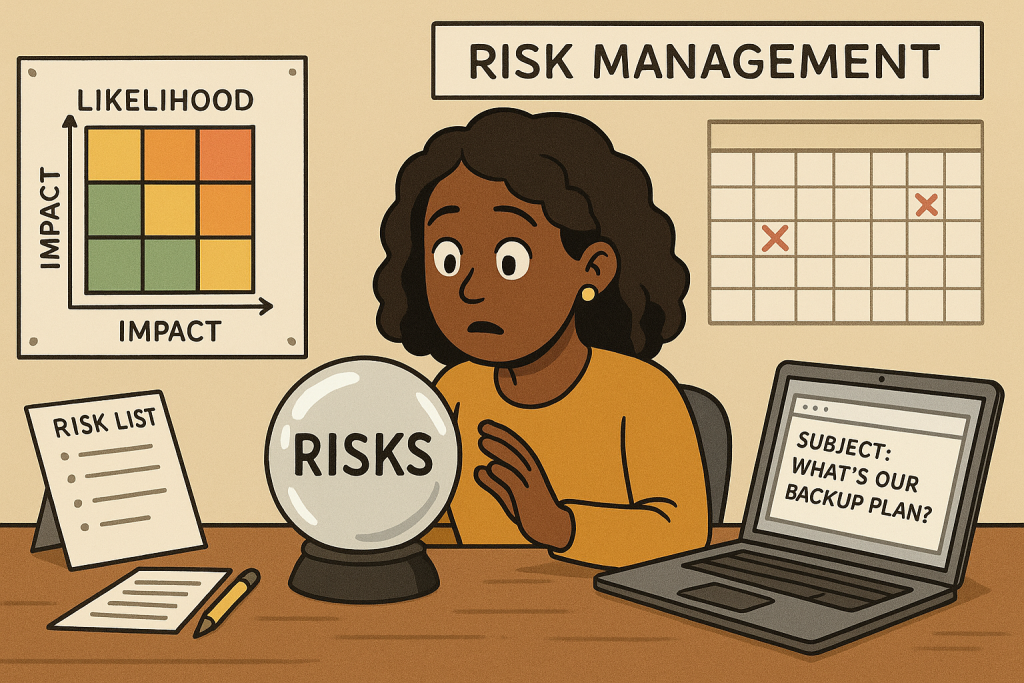
Risk Management: Fortune-Telling With a Side of Paranoia
By now, you’ve gotten the hang of meetings, stakeholders, and status reports. You might even feel like you’re starting to get it.
Which is exactly when someone will ask:
“So, what are the risks?”
Welcome to the magical world of risk management — where you’re expected to predict the future like some sort of office crystal ball reader.
1. Risks vs. Issues
Let’s clear this up:
- Risks = Bad things that might happen.
- Issues = Bad things that already happened.
Example:
- Risk: The vendor might be late.
- Issue: The vendor is already late, and you’re stress-eating pretzels at your desk.
2. Make a Risk List (Yes, a Real One)
Don’t keep risks in your head — they’ll multiply like gremlins.
Instead, write them down:
- What could happen
- How likely it is
- How bad it would be
- What you’re going to do if it does happen
Boom. You now look like a professional.
3. Assign Owners (Because Sharing Is Caring)
Risks shouldn’t all sit on your shoulders. Assign them to the people who can actually do something about them.
“What if the code breaks?” → That’s IT’s problem.
“What if finance won’t approve the budget?” → Send it back to finance.
4. The “What’s Our Backup Plan?” Question
Executives love to ask this.
Your job: always have a backup (even if it’s just, “We’ll cry, regroup, and try again with more coffee”).
Pro tip: Calling it a “contingency plan” makes it sound smarter.
5. Don’t Go Overboard
Yes, risk management matters. But no, you don’t need to list meteor strikes, alien invasions, or coffee shortages as project risks.
Keep it practical. Keep it believable. Keep it moving.
Closing Thought
Risk management is less about paranoia and more about preparation. You don’t need a crystal ball — just a good list, a realistic backup plan, and the confidence to say, “We saw this coming.”
This was Chapter Six of The Bible of the Volunteer-Told Project Manager.
Stay tuned for Chapter Seven: “Scope Creep: When ‘Just One More Thing’ Tries to Kill Your Project.”
